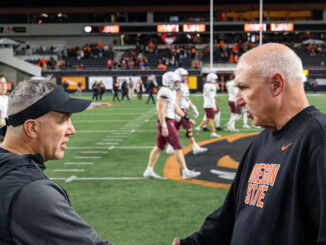
Oregon State’s decision to fire head football coach Trent Bray on October 12, 2025, after a brutal 0-7 start, was a gut punch for Beaver Nation. Bray, a proud alum and former All-Pac-12 linebacker, was once seen as the embodiment of Oregon State’s gritty spirit. Yet, his 5-14 record over two seasons, coupled with a program spiraling into irrelevance, made his dismissal inevitable. The story of Bray’s downfall is not just about wins and losses. It’s about a hire made under pressure, a program battered by external forces, and a coach who was never equipped to navigate the storm.
A Hire Born of Desperation
When Jonathan Smith, the architect of Oregon State’s resurgence, left for Michigan State after the 2023 season, the Beavers were already reeling. The Pac-12’s collapse left Oregon State and Washington State as the conference’s lone survivors, facing a future of diminished revenue and prestige. With star players fleeing via the transfer portal and financial uncertainty looming, athletic director Scott Barnes needed stability. Bray, a loyal assistant who had served as defensive coordinator, was the convenient choice. He was a familiar face who could rally the program without a prolonged search.
But convenience came at a cost. Bray had no head coaching experience, and as Barnes later admitted in a candid Q&A with The Oregonian/OregonLive, he struggled with the CEO aspects of the job. Leading a program requires more than passion. It demands strategic vision, tough personnel decisions, and the ability to manage a complex operation. Bray’s hires leaned heavily on familiarity rather than experience, leaving his staff thin on the expertise needed to weather a rebuilding phase. The decision to promote from within, while emotionally appealing, was a gamble that assumed Bray could grow into a role he wasn’t built for.
A Program in Freefall
Oregon State’s challenges were bigger than Bray. The Pac-12’s disintegration stripped the Beavers of their Power Five status, slashing television revenue and complicating recruiting. The team’s 2024 season started promisingly at 4-1, but a 1-6 finish hinted at deeper issues. By 2025, the wheels had come off. Special teams blunders, like those in a winnable game against Houston, and defensive collapses (Oregon State ranks 132nd in yards per play allowed) exposed a team lacking discipline and cohesion. A 39-14 home loss to Wake Forest, with a backup quarterback carving up the Beavers, was the final straw.
Fan frustration spilled over, with empty seats at Reser Stadium and a Fire Barnes sign reflecting the growing discontent. Bray’s firing came before he could even part ways with offensive coordinator Ryan Gunderson, signaling that Barnes saw no path forward. The program’s slide wasn’t just about on-field performance. It was a symptom of a university grappling with its new reality as a Group of Six program, fighting to maintain relevance.
Why Bray Was Doomed
Bray’s tenure was doomed from the start for three key reasons. First, he inherited a program in crisis. The Pac-12’s collapse created a talent drain and financial strain that no first-time coach could easily overcome. Second, Bray’s lack of head coaching experience left him ill-prepared to manage the program’s complexities. His reluctance to embrace the broader responsibilities of leadership, as noted by Barnes, meant he couldn’t adapt quickly enough. Finally, the fanbase’s impatience, amplified by college football’s win-now culture, left little room for growing pains. Even a beloved alum like Bray couldn’t escape the pressure of a 0-7 start.
The Road Ahead
Bray’s exit marks a pivotal moment for Oregon State. The rebuilt Pac-12, set to include Mountain West schools and Texas State in 2026, offers a more winnable competitive landscape. A new coach could capitalize on this, leveraging Oregon State’s solid facilities and passionate fanbase to aim for conference titles and playoff berths. Names like Montana State’s Brent Vigen, UC Davis’s Tim Plough, and former Wisconsin coach Paul Chryst are already circulating as potential candidates. Whoever takes the helm will need to navigate the transfer portal’s new rules, which delay player exits until after a new coach is hired, offering a chance to retain talent like quarterback Maalik Murphy.
For Bray, the future remains bright. At 43, his defensive expertise will make him a valuable assistant elsewhere, perhaps at Stanford or UCLA, as some suggest. But for Oregon State, the focus is on finding a leader who can rebuild a program battered by circumstance. Bray’s firing wasn’t just about his failures. It was about a university refusing to let its football legacy fade. The next hire will determine whether the Beavers can reclaim their place as a force in the new Pac-12 or remain lost in the wilderness.



